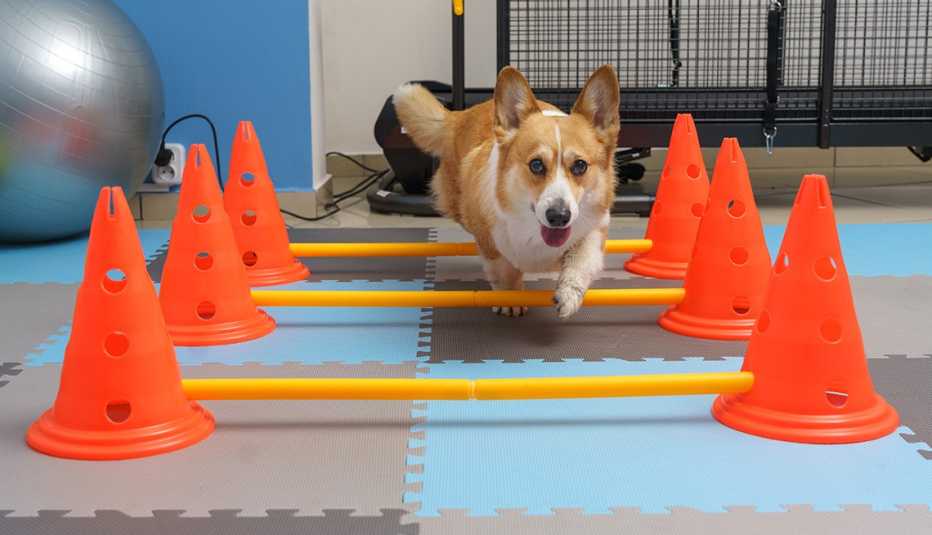AARP Hearing Center


There’s a lot to love about winter. The serenity of snowflakes dancing outside your window, cozy blankets and roaring fires. For pet parents, however, winter’s simple pleasures can be hard to enjoy thanks to the sobering reality of bitter cold, salty sidewalks and black ice, all of which make it miserable — if not dangerous — to walk one’s dog.
It’s not just weather, either. From illnesses that keep you homebound and injuries that limit your mobility to meetings, errands and appointments that consume your calendar, there are myriad reasons you might not be able to squeeze in a walk for your pup on any given day.
If your dog is elderly or of a certain breed — bulldogs, pugs and Pekingese, for example, are known for being more sedentary — that might be OK. But if you have a high-energy pet that requires more activity, regularly missing walks could be problematic, suggests Lorraine Rhoads, director of health and safety at Dogtopia, which operates more than 250 dog day care centers across the United States and Canada.
Studies show that dogs who have a good amount of exercise and mental stimulation not only live longer but are just “better canine citizens,” says Rhoads. “They’re better family members at home. They have better manners. And they’re not going to be as interested in investigating things they shouldn’t ingest or chew on.”
Alongside chewing, clues that your dog isn’t getting enough activity include excessive barking or whining, hyperactivity and restlessness, repetitive or obsessive behaviors like tail chasing or licking, increased aggression, panting or overexcitement, and weight gain, Rhoads says.
So what do you do when outdoor exercise isn’t possible? Here are nine ideas:
1. Tire them with training
“Dogs love to learn. … Focusing and learning for them is really exhausting,” says celebrity dog trainer and Rover.com expert Nicole Ellis. “You don’t need to do crazy training. It could be fun things like teaching your dog to shake, high-five or spin in a circle. You can find free videos for these online. … Just five to 15 minutes can make a world of difference. You’ll create a stronger bond with your dog while also tiring them out.”






































































More From AARP
Quiz: Pets and Your Health
Find out what you know about the benefits
All Aboard: Tips for Traveling With Your Pet on a Train
Here’s what you need to know before and after you boardGreat Pets That Aren’t Cats or Dogs
Unusual animals can also provide companionship for older adults
Recommended for You